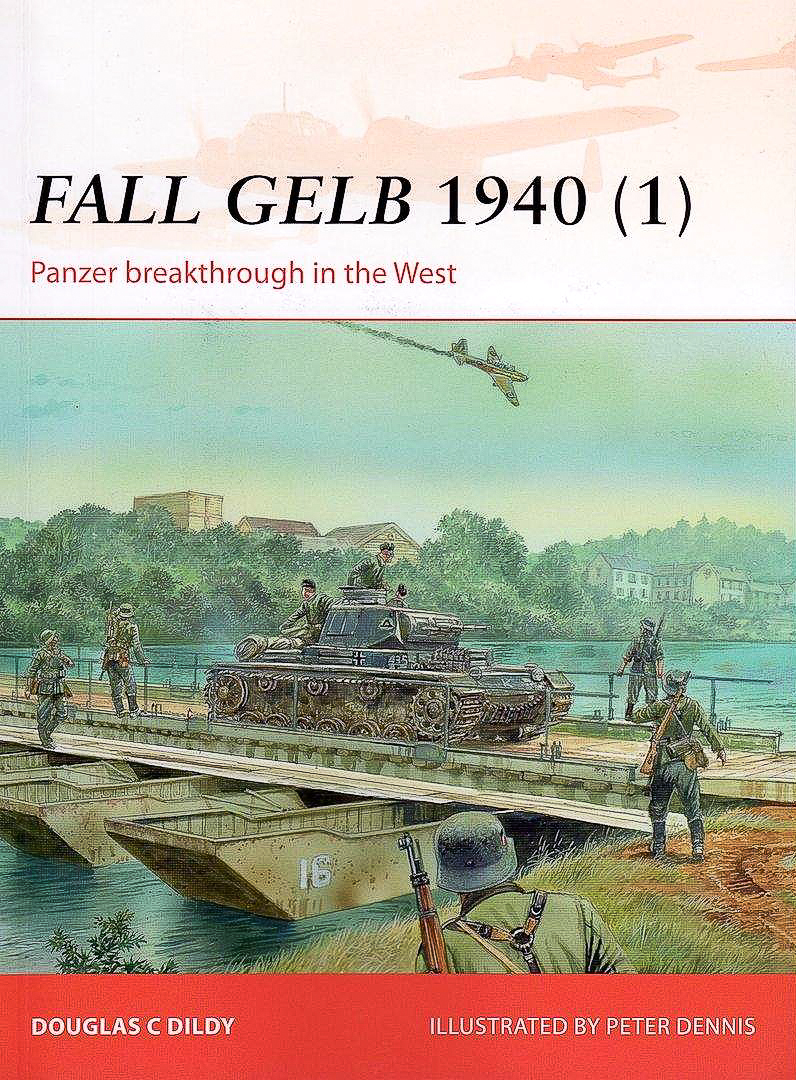Fall Gelb 1940 (1): Panzer Breakthrough in the West
Fall Gelb 1940 was a detailed German deployment order designed to launch the initial phase of Hitler's military campaign to eliminate the Western democracies from the European conflict. Osprey Publishing covers this deployment order in the new book Fall Gelb 1940 (1): Panzer Breakthrough in the West.
The objective of the Fall Gelb was to defeat the largest possible forces of the Anglo-French army by an attack through Belgium and Luxembourg territory, thereby paving the way for the destruction of the military strength of the enemy.
Chief architect of the Fall Gelb plan was OKH Chief of Staff, General Franz Halder. Halder’s plan included four parallel branches:
- Vigorous attacks against the Maginot line.
- The airborne invasion of the Netherlands by the Luftwaffe.
- A strong advance through Central Belgium.
- An additional advance through Luxembourg and southern Belgium.
The plan resulted in a swift and conclusive German conquest of France and the Low Countries in May and June 1940, as the Germans forced their way through Belgium and raced through France to the English Channel.
The attack forced the British forces to withdraw to Dunkirk where Operation Dynamo evacuated them from France. It also forced the Belgian and French armies to surrender, and France to sign an armistice with Germany.
The contents of the book include:
- Origins of the Campaign - describes Germany's preparation of the Fell Gelb plan.
- Chronology - dates of the military actions.
- Opposing Commanders - brief biographies of the German and French commanders
- Opposing Plans - description of the Fall Gelb plan and the French Plan D.
- Opposing Forces - Overview of the German forces, Allied forces, and detailed orders of battle listing each of the opposing armies and the make up of their units.
- The Campaign - Describes in detail each day's action of the Fall Gelb during May 1940
- Aftermath - Describes the results of the swift and decisive German victory.
- The Battlefield Today - Overview of remaining fortifications & museums.
- Further Reading, Glossary, Index.
The Campaign is the largest section of the book, and it includes detailed descriptions, almost on a daily basis, of the movements and battles of the opposing forces. This section uses illustrative paintings of battle scenes, historical photos, and very detailed maps covering troop movements through the battlefields.
The book includes several large three-dimensional aerial diagrams of key battles and river crossings, covering Guderon crossing the Meuse River at Sedan, Rommel crossing the Meuse at Dinant, and the British Expeditionary Forces attacking Rommel at Arras.
The text provides a very detailed description of the German offensive, the maps and diagrams provide a great insight into the movement of troops, and the book’s photographs and illustrations provide strong visual images of the battles and events.
The book is very nicely done, highly detailed, profusely illustrated, and provides a thorough history of the Fall Gelb campaign.
The book is highly recommended. Many thanks to Osprey for their continued publication of outstanding military publications and providing this review copy. Thanks also to the IPMS/USA Reviewers’ Corps staff for giving me the opportunity to review the book.






Comments
Add new comment
This site is protected by reCAPTCHA and the Google Privacy Policy and Terms of Service apply.
Similar Reviews